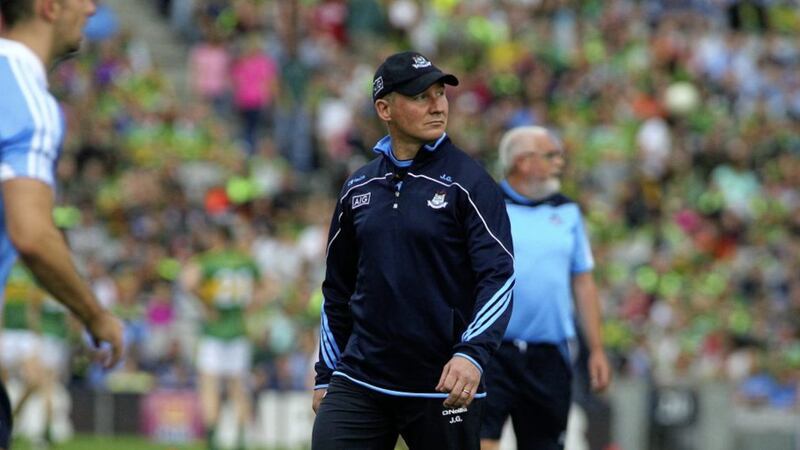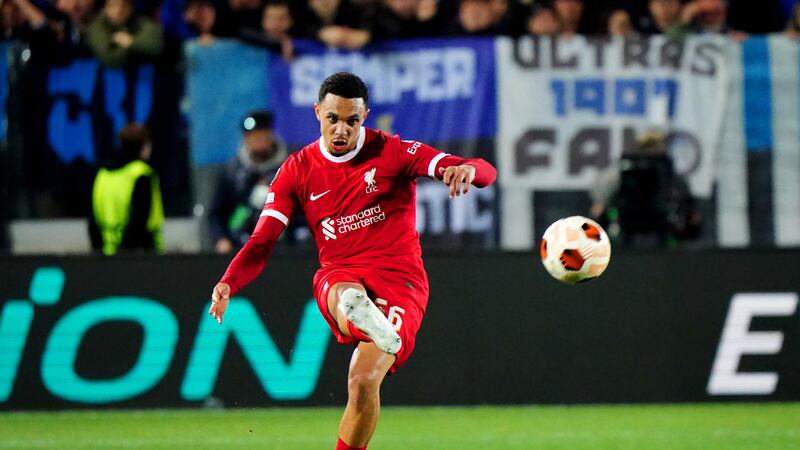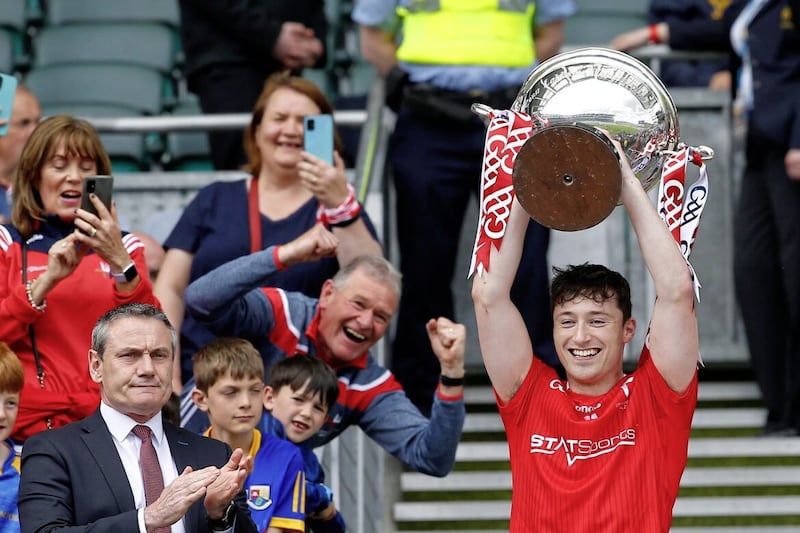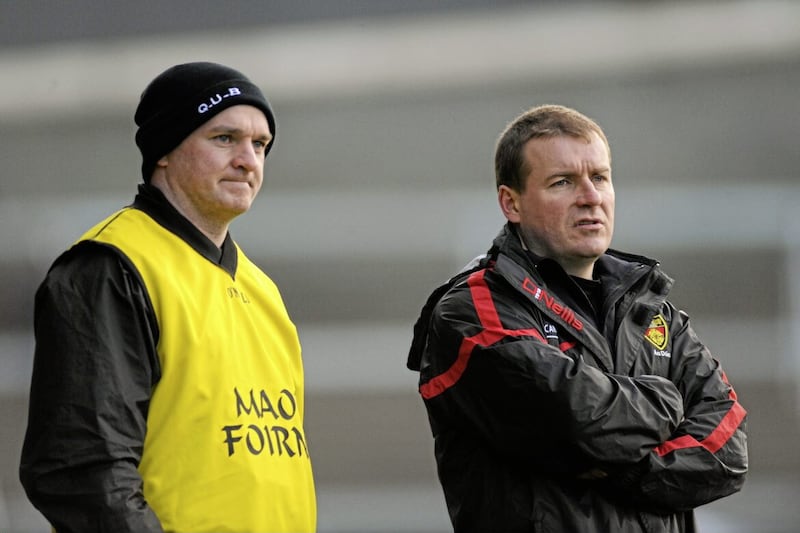LAST July, Jim Gavin granted his first-ever one-to-one interview to a newspaper. I liked the print journalist who was granted the privilege and eagerly awaited the published article.
Unfortunately, the piece was not about what life was like managing one of the best teams in the history of Gaelic football.
It was a three-page plug for the upcoming Bray Air Display Show.
Gavin’s occupation is a safety officer for the Irish Aviation Authority. He’s mad about planes and was due to fly a 72-year-old biplane at the air show in Bray.
The thrust of his first one-to-one interview with a print journalist was why he steers clear of ever doing them because it’s not about him – it’s about the Dublin team.
I was mentally tasered by the second page.
There was much talk about “processes and protocol” but absolutely no insight into what makes a brilliant football mind tick.
From the outset, the reader knew the Dublin football team was off limits in this one-to-one interview.
It was strictly about the air show. That was the deal.
And yet, here we have this bunch of wonderful footballing extroverts and artisans who enthrall us on the big days in Croke Park but disappear from view as soon as the final whistle sounds.
Some of the Dublin players attend the odd paid media gig – nothing wrong with a GAA player being thrown a few euros to attend such events during work hours – but, apart from Philly McMahon, they don't say a great deal.
Many of them are media-trained to within an inch of their choreographed lives.
Earlier this week, Paul Flynn was promoting Avonmore Protein milk on YouTube.
Is this the kind of archive the GAA’s top players are leaving behind?
I unfollowed Seamus Callanan on Twitter recently because he kept re-tweeting posts about Stapleton's Bakery.
At a recent press gig, the Tipperary hurler was allowed to pose for photographs but banned from speaking with reporters.
Is this game-face behaviour really necessary? What purpose does it really serve?
The sad thing is many GAA supporters have given up on reading about or listening to the vast array of GAA stars because they don’t have a lot to say for themselves.
It’s a colourless landscape.
Because media relations with the GAA have become so controlled there is no link, no empathy, no feeling with many of the Association’s top players.
When Jim Gavin decided not to grant interviews to some of the broadcast media last Sunday afternoon over the treatment of his suspended player Diarmuid Connolly, nobody cared.
Nobody felt short-changed – not even those working in the broadcast media – by this impromptu ban because the GAA media gets short-changed on a regular basis.
I don’t know anything about Jim Gavin other than the fact that he is a civil fella in the post-match press conference room in Croke Park.
Like all managers at headquarters, he sits behind a top table with a few press officers dotted around the room and the reader learns nothing, as a series of anodyne sound-bites are unthinkingly churned out for public consumption.
These events have a demoralising, tranquilising impact on everyone.
I understand Gavin has to manage the hype surrounding this Dublin team but to what extent?
Love him or loathe him, at least Joe Brolly brings some colour to the GAA stage because everything else is so hum-drum and controlled with a vice-like grip.
It doesn’t have to be this way.
The GAA doesn’t need to take itself so seriously.
Last October, I drove down to Dundalk on a dank Thursday evening and sat in a quiet corner of a pub interviewing Dundalk manager Stephen Kenny.
It was one of the best hours I’ve spent in almost two decades in sports journalism.
Regarded as one of the best coaches in Ireland, Kenny talked about his roots, politics and how sport and successful football teams can lift the esteem of a community.
At that time, Dundalk Football Club were making history.
They’d qualified for the group stages of the Europa League and became the first Irish team to win a game at that level.
Kenny was happy to discuss his philosophy on the game. He’d reject the conventional wisdom at every turn.
“Some people,” he mused, “think we [Irish teams] are more suited to playing a direct style but I don’t accept that that’s in our DNA. That’s just their viewpoint.
“Part of your job as a coach is to make players better – [to say we have to] accept that they’re always going to be mediocre, that we’ve to play within certain confines… it’s sometimes too easy to say that.
“We have to think about the game differently; we have to think how we can dominate possession, no matter who we’re playing.”
It was brilliant, insightful interview.
As far as I’m aware, I don’t think the two-page feature derailed Dundalk’s fantastic Europa League campaign.
As far as I can determine, I don’t think the piece had a negative impact on Stephen Kenny.
However, a clear consequence of that article was that it generated empathy between the reader and Dundalk football team.
It generated a feeling, a kinship.
You were left wanting Dundalk to do well on those European nights.
In his candidness, Stephen Kenny left an archive that was worth leaving.
It was more authentic than a YouTube video about milk or a tweet about a loaf of bread.
Sit-down interviews are becoming a rare thing in the newspaper industry.
A newsroom operates at a blurring speed these days. It’s the 24/7 media world we live in.
For journalism to retain its depth, those one-to-one interviews are crucial to its overall wellbeing.
A couple of weeks ago, I sat in a coffee shop with Ciaran McKeever and talked about his first days with Armagh to the present.
Armagh beat Fermanagh by nine points the following week.
I don’t think the published interview with McKeever did anybody any harm apart from create empathy between the reader and the player.
My colleague Neil Loughran wrote award-winning pieces with former Down players Peter Withnell and Marty Clarke.
Both were one-to-one interviews.
On his semi-retirement, the great scribe of our time Hugh McIlvanney lamented the changes in sports journalism and the “shrinkage of meaningful access”.
He wrote: “But that privileged access is firmly associated in my mind with the atmosphere and ethos of those days, a time when the links between journalists writing about sport and the subjects of their pieces were more relaxed and more real.”
Somewhere along the line the GAA lost itself in its own narcissism.
It's reached the stage where nobody cares about Jim Gavin or Diarmuid Connolly’s perceived plights because we don’t know them.
There is no empathy. And that's the problem.









